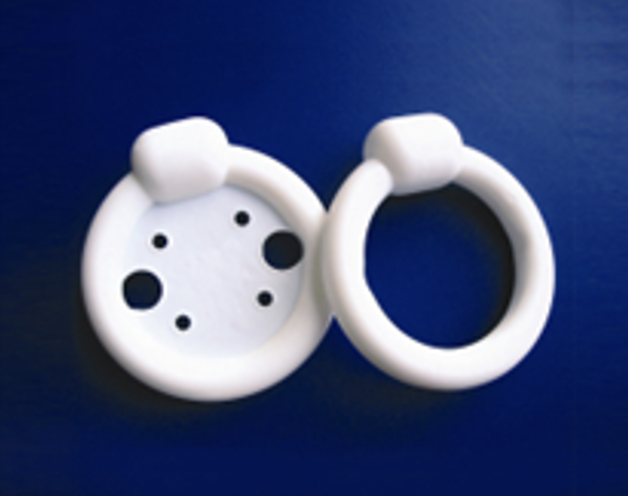
Pessary Fitting
A pessary is a device made of medical grade silicone or plastic. It acts like a sports bra for the pelvic organs – lifting and supporting them to help relieve pressure within the pelvis. Pessaries can be very effective in the treatment of prolapse and urinary incontinence.
What is a Pessary?
A pessary is a device made of medical grade silicone or plastic. It is inserted into the vagina (like a tampon) and properly positioned to help support the vaginal wall and elevate the pelvic organs, such as the bladder, rectum, and/or uterus. Think of it as a sports bra for the pelvic organs. The goals of using a pessary are to:
Alleviate uncomfortable sensations of pelvic heaviness/pressure due to pelvic organ prolapse
Improve difficulties associated with emptying the bladder or bowel as a result of pelvic organ prolapse
Prevent stress urinary incontinence associated with coughing, sneezing, laughing, jumping or any other form of higher impact activities
Using a pessary is a conservative management option (non-invasive) that can greatly improve the quality of life for those suffering from pelvic organ prolapse or stress urinary incontinence. Pessaries are a great adjunct to Pelvic Health Physiotherapy and are often considered when surgery is not an option, or an individual decides not to have surgery.
Pessaries do not work for all women or vagina owners, but because they are very low risk, it is definitely worth exploring to see if it is a good option for you!
What conditions can Pessary Fitting Treatment help with?
Pessary use can be very beneficial for people suffering from prolapse and urinary incontinence
Prolapse occurs when one or more of the pelvic organs, which includes the uterus, bladder, rectum and small intestine, descends into the vaginal canal. Prolapse is very common, occurring in up to 50% of women in varying degrees of severity. Common symptoms include:
Feeling like there’s something bulging or protruding in the vaginal area
Sensation of pressure or heaviness
Urinary and/or fecal incontinence, or leakage
Incomplete emptying of the bowel and/or bladder
The pelvic floor is closely connected to prolapse. If the integrity and strength of the pelvic floor and/or connective tissue are weakened, this can reduce the support to the pelvic organs. This, in turn, can increase the pressure in the abdomen and add more downward strain, result in a lowering of the organs into the vaginal canal (i.e., prolapse). A pessary works by lifting and supporting the pelvic organs to decrease symptoms of heaviness, pressure or bulging.
Urinary incontinence is the medical term for the involuntary loss of urine. Basically, peeing when you don’t want to – or should be! Stress urinary incontinence is the most common form, where an increase in intra-abdominal pressure (like when you cough, sneeze, laugh or jump) causes a leakage of urine.
The shape of incontinence pessaries vary but some include a small knob at the front. The knob provides gentle compression of the urethra (the canal through which urine exits our body) against the pubic bone. This pressure reduces or resolves incontinence when pressure within our abdomens increases.
A pessary must be fitted by someone trained to do so, such as one of our Pelvic Health Physiotherapists.
Book an appointment to learn more and book a pessary fitting appointment.
There are different shapes and sizes of pessaries. When inserted correctly, you should not feel it’s even there. Depending on your symptoms and overall health, it may be left in for days, weeks or removed daily. If it is to be removed daily, your physiotherapist will teach you how to remove, clean and insert the device. You may also see a nurse or doctor each time it is removed, cleaned, and re-inserted. Some clients wear their pessary all day long and others only insert it for activities where they feel they need a little extra support.
There are potential risks, including irritation and infection. Not every woman experience these. Your Pelvic Health Physiotherapist will educate you on warning signs to look out for and when to seek medical attention.
Additional Resources:
Check out our blogs to learn more pessaries and pelvic health. Here are a few we selected:
Plus, check out these videos on our YouTube channel:




